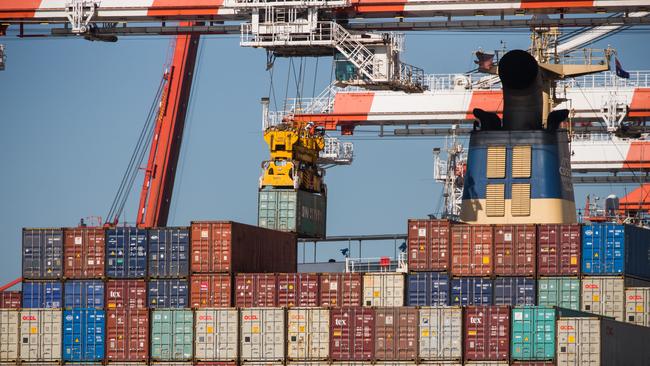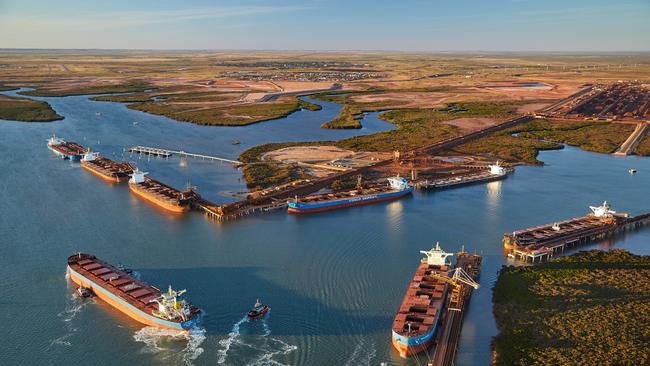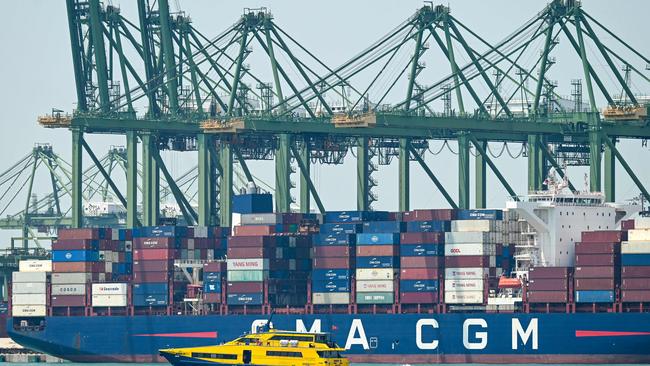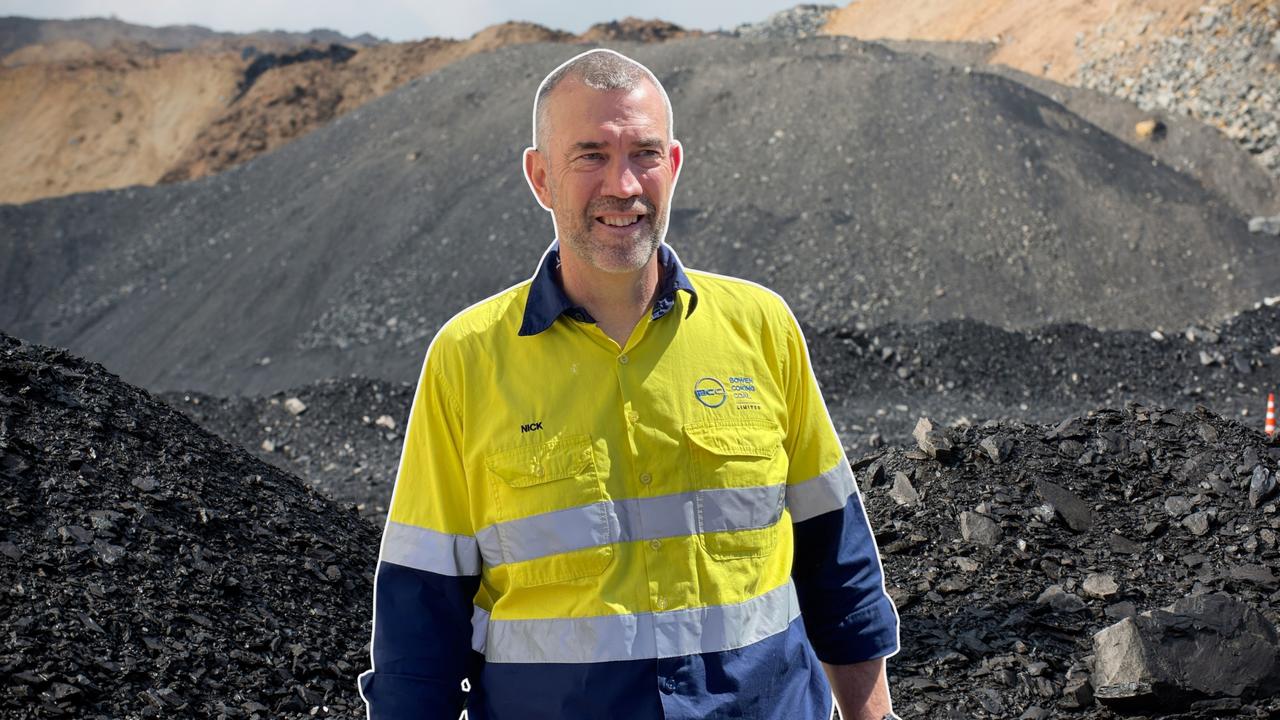Ports Australia launches industry-first emissions inventory guidance
Ports Australia has created the first industry guidance for net zero emissions globally that it hopes will fuel greater competition and thinking around how the sector can do its bit for the environment.

Business
Don't miss out on the headlines from Business. Followed categories will be added to My News.
Australian ports have thrown down the gauntlet to their global peers in the race towards net zero emissions, with the launch of an industry-first emissions inventory guidance.
Ports Australia says it will allow local ports to remain at the forefront of sustainable global trad and assist ports and their stakeholders around Australia in developing greenhouse gas emissions inventories.
The guidance is expected to help to drive sustainable practices and ensure the long-term global competitiveness of the country’s major ports.
Ports Australia chief executive Mike Gallacher told The Australian that the sector lacked tailored emissions guidelines and the development of a domestic framework had paved the way for much larger global players to follow Australia’s lead.
“We looked internationally and there was nothing available for our ports, and we were looking to be able to provide them with some guidance around measurement of Scope 1, 2 and 3,” he said.
“What we wanted to do was to get them all together and see if there was a way that we could produce a nationally consistent guidance document to assist them in that regard and that’s where we’ve landed.”

The guidance provides a comprehensive and explicit explanation of how Australian ports can quantify and report on Scope 1, 2 and 3 greenhouse gas emissions. While it won’t be mandatory, the framework introduces an element of industry-wide accountability, giving private ports the ability to compare their emissions performance against competitors.
Mr Gallacher said the guidance has already sparked international interest, with the International Association of Ports and Harbors having shown interest in seeing the final document and using it more broadly.
“It’s not unusual for the Australian port sector to be punching above its weight,” he said.

“We want to share this with our Pacific neighbours, too, who look to us to provide them with current thinking and knowledge, and it really does save reinventing the wheel if we can share this journey with one another. Then the whole sector wins. It’s no use being kept internally.”
Mr Gallacher said it was likely that other ports had produced similar documents or frameworks but had decided not to share them with the broader sector.
“We’re throwing the challenge to others to show us how we can do this better,” he said.
“It’s about how can we make the infrastructure last longer, so there’s a dollar value to all of this but also an environmental outcome as well about how we produce sustainable wharf infrastructure port infrastructure that isn’t going to destroy the environment but can last longer and allow us to not have to use other resources to replace it.”
Currently, emissions guidance and standards both in Australia and internationally provide principles around emissions accounting that are applicable but not tailored to ports and port managers.

Ports Australia noted that ports were complex from an emissions accounting standpoint due to multiple stakeholders, overlapping jurisdictions and their role as a node in the value chain, which made it challenging to apply existing frameworks.
The updated guidance clarifies how ports should define their emissions boundaries to avoid double counting and ensure accurate reporting, particularly for emissions from tenants, cargo handling and vessel activity, as well as the need to prioritise primary data over secondary data.
While reporting under this guidance is not mandatory, it supports compliance with NGER, Australian Sustainability Reporting Standards, and potential future regulations.
“We are constantly looking for new ways that we can improve the way we do business in the country,” Mr Gallacher said. “In many ways this guidance gives a bit of competition to ensure we can all strive to do better and to show customers that ports are holding up their end of the bargain.”
The guidance was developed with the support of Worley Consulting and the Ports Australia climate change and decarbonisation subcommittee.
Major operators including NSW ports, Fremantle, Gladstone, Newcastle and Melbourne are members of the industry body.
Originally published as Ports Australia launches industry-first emissions inventory guidance



